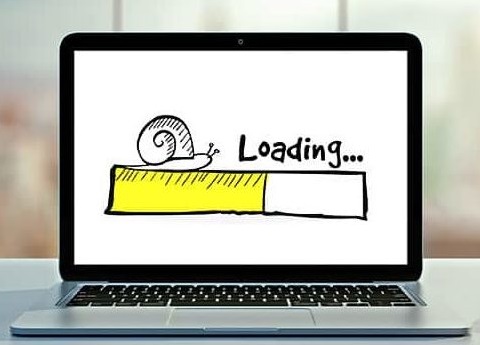Common Fixes for a Slow-Loading Website
The pages themselves take ages to properly load. Assuming that this is not an issue with the processing power of your device, the chances are high that the site itself requires a bit of optimisation. We will take a look at some effective strategies as well as when it may be time to seek professional help.

Coding Errors
Industry professionals tend to agree that the most common reason behind slow page loading times involve code that has been improperly entered or otherwise needs to be updated. However, what if you have little experience in such technical matters? In this case, it is wise to leverage the advanced nature of third-party software. The webite builder created by IONOS is one example of how intuitive these programs have become. Not only can these systems be used to develop a website from the ground up, but they are also extremely useful in the event that a touch of troubleshooting is warranted.
Too Many Advertisements
On-site advertisements are an excellent way to increase your online footprint and to generate additional revenue. These are some of the reasons why free website software programs often employ affiliate marketing. This strategy can be used to make up for relatively simplistic site designs. However, ads also come at a price. Advertisements can take up a great deal of bandwidth that might otherwise be devoted to on-site elements such as videos and flash content. Let us also remember that ads resulting in blind links can easily cause visitors to look elsewhere for similar products and services. In other words, keep any advertisements to a minimum and make certain that they are relevant to your audience base.
A Lack of Image Optimisation
Were you aware that more than half of all online consumers will leave a website if its pages take longer than six seconds to load? It now becomes clear why speed is so essential. Yet another issue that some portals encounter is associated with embedded images. Extremely large or detailed images take up a significant amount of memory. While this
normally is not an issue, it can evolve into a problem in the event that the images have not been optimised. Here are some of the signs that an image has not been properly formatted:
- There are no HTML tags
- It lacks a description
- The image is not named
The good news is that these pitfalls are rather easy to overcome when using even a basic website editor.
When to Seek Professional Assistance
There can still be times when the strategies outlined above fail to yield the desired results. In such cases, it is normally prudent to consult with a website design expert. He or she can provide additional device and there is little doubt that the problem will be discovered in no time at all.
You should read it
- How to check your website speed fast or slow
- Slow loading sites will get a 'shame badge' by Google.
- Go to Facebook slowly, try the following
- Firefox will slow down the process of loading user tracking scripts
- When the network speed is slow, turn this feature off to browse the Web on browsers faster
- Facebook changes News Feed, giving priority to fast loading websites
- How to fix the error is not accessible coccoc // plugins
- The best website load testing tools available today
- The printer prints slowly - Causes and effective and quick fixes
- Speed of downloading YouTube videos is as slow as slugs, this is a fix
- Fix Bluestacks Initializing load errors permanently on the main screen
- How to disable Google AMP in Google search on Android and iPhone
May be interested

How to use the Google Circle to Search feature

7 little-known Google Pixel 8 features you should use today

How to view Telegram Story secretly that no one knows

Share the solution when Facebook cannot rotate the screen

Detailed instructions on how to fix Google Drive not downloading error

Solution to handle Google Chrome image display error





 How to check your website speed fast or slow
How to check your website speed fast or slow Slow loading sites will get a 'shame badge' by Google.
Slow loading sites will get a 'shame badge' by Google. Go to Facebook slowly, try the following
Go to Facebook slowly, try the following When the network speed is slow, turn this feature off to browse the Web on browsers faster
When the network speed is slow, turn this feature off to browse the Web on browsers faster Fix Bluestacks Initializing load errors permanently on the main screen
Fix Bluestacks Initializing load errors permanently on the main screen